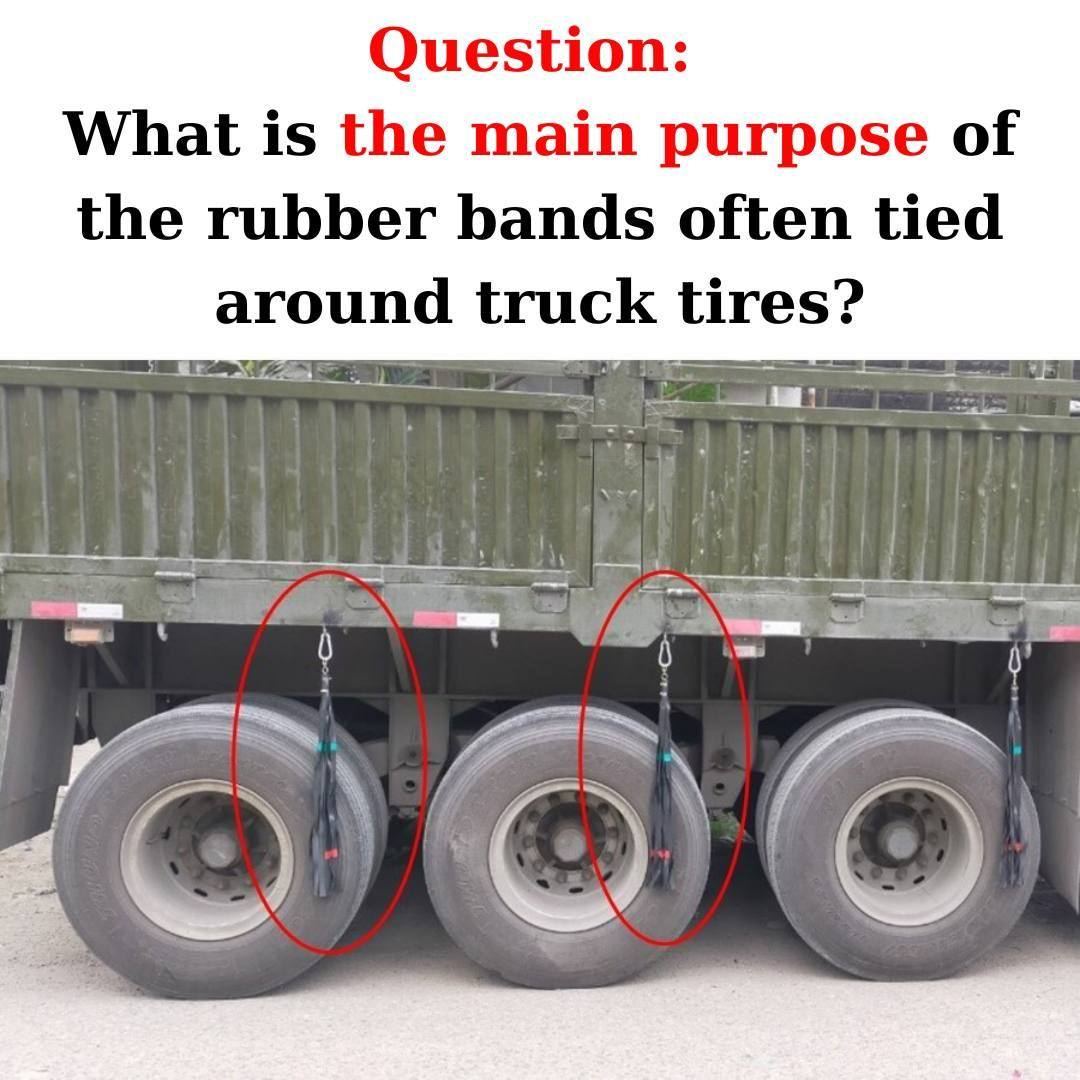If you’ve ever driven behind a large truck and noticed rubber bands or black rubber strips hanging near the wheels, you might have wondered what they’re for. While they might look like random add-ons or decorations at first glance, these rubber pieces actually serve a functional and practical purpose.

According to experienced truck drivers, these rubber strips—often referred to as rubber bands or strings—are intentionally placed near the wheels to help manage debris and assist with tire maintenance. One seasoned driver explained that these rubber components are primarily used to remove mud, dust, and small rocks from the surface of the tires as the truck moves. This is especially useful for trucks that regularly travel through construction zones, rural routes, or muddy terrains. These types of environments naturally lead to a build-up of grime on the tires, which can be both unsightly and problematic.
The rubber bands essentially act as makeshift tire cleaners, brushing against the wheels and helping to knock off dirt before it accumulates or causes damage. This clever, low-cost solution is appreciated by drivers because it doesn’t require any special machinery and can be implemented easily with materials that are widely available. Beyond keeping the tires cleaner, the rubber bands also make it easier for drivers and mechanics to inspect the tires. When mud or debris cakes over the sidewalls or treads, it becomes more difficult to see important tire information, such as size, pressure rating, and wear patterns.
Keeping the tires relatively clean with the help of rubber strips allows for quicker visual checks and ensures that issues like underinflation or tread damage can be spotted early. Early detection of tire problems is critical for safety, particularly on long-haul trips where a blowout or flat could lead to major delays or accidents. Moreover, there’s another important benefit that’s often overlooked: reducing the amount of debris that gets flung onto nearby vehicles. When a heavy-duty truck speeds down the highway with dirty tires, it can kick up chunks of mud, rocks, or other materials that then hit windshields or paint jobs of cars behind them.
This can lead to dangerous situations or expensive repairs for other drivers. By using rubber bands to knock excess dirt off before it flies into the air, trucks are helping to keep the roads safer and more pleasant for everyone. It’s a small gesture, but it goes a long way toward improving driving conditions. Although this practice is not universally adopted or mandated by law, many truckers voluntarily install these rubber strips because they’ve experienced firsthand how helpful they can be. It’s a perfect example of how on-the-road experience leads to smart, DIY solutions that make a real difference. These rubber bands are often made from recycled inner tubes or other durable rubber materials, which adds an environmentally friendly angle to the practice.
Instead of throwing away old rubber, drivers repurpose it to improve their vehicle’s performance and safety. Some truck owners even customize the length and placement of the strips to better suit their vehicle size or the types of roads they typically drive on. While it might not be the most high-tech solution out there, it’s certainly effective, cost-efficient, and easy to maintain. So, the next time you spot a big rig with rubber strings flapping near its tires, you’ll know it’s not just for show.
It’s a practical tool used by thoughtful drivers to keep their tires cleaner, make inspections easier, protect fellow motorists, and even reduce maintenance needs. What seems like a minor detail is actually part of a larger effort to keep these massive vehicles operating smoothly and safely on long journeys. These rubber bands might be a small addition, but they reflect the kind of hands-on problem-solving and road-savvy thinking that professional drivers rely on every day to stay safe and efficient out on the highway.





